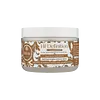What's inside
What's inside
 Key Ingredients
Key Ingredients

 Benefits
Benefits

 Concerns
Concerns

 Ingredients Side-by-side
Ingredients Side-by-side

Water
Skin ConditioningGlycerin
HumectantAloe Barbadensis Leaf Juice
Skin ConditioningPEG-40 Hydrogenated Castor Oil
EmulsifyingMel
EmollientXanthan Gum
EmulsifyingVitis Vinifera Seed Oil
EmollientAlthaea Officinalis Root Extract
Skin ConditioningUlmus Fulva Bark Extract
MoisturisingTocopheryl Acetate
AntioxidantPanthenol
Skin ConditioningParfum
MaskingPhenoxyethanol
PreservativeEthylhexylglycerin
Skin ConditioningPolysorbate 20
EmulsifyingPotassium Sorbate
PreservativeSodium Benzoate
MaskingCitric Acid
BufferingWater, Glycerin, Aloe Barbadensis Leaf Juice, PEG-40 Hydrogenated Castor Oil, Mel, Xanthan Gum, Vitis Vinifera Seed Oil, Althaea Officinalis Root Extract, Ulmus Fulva Bark Extract, Tocopheryl Acetate, Panthenol, Parfum, Phenoxyethanol, Ethylhexylglycerin, Polysorbate 20, Potassium Sorbate, Sodium Benzoate, Citric Acid
Water
Skin ConditioningAloe Barbadensis Leaf Juice
Skin ConditioningPropylene Glycol
HumectantLaminaria Digitata Extract
Skin ProtectingXanthan Gum
EmulsifyingPolysorbate 60
EmulsifyingLactobacillus/Tomato Fruit Ferment Extract
Skin ConditioningOryza Sativa Extract
AbsorbentKeratin Amino Acids
Skin ConditioningAcyl Coenzyme A Desaturase
Skin ConditioningPersea Gratissima Fruit Extract
EmollientHoney Extract
HumectantPanthenol
Skin ConditioningGlycine Soja Seed Extract
Skin ConditioningElaeis Guineensis Fruit Extract
Skin ConditioningSalvia Officinalis Leaf Extract
CleansingTocopheryl Acetate
AntioxidantPhenoxyethanol
PreservativeSorbic Acid
PreservativeCaprylyl Glycol
EmollientWater, Aloe Barbadensis Leaf Juice, Propylene Glycol, Laminaria Digitata Extract, Xanthan Gum, Polysorbate 60, Lactobacillus/Tomato Fruit Ferment Extract, Oryza Sativa Extract, Keratin Amino Acids, Acyl Coenzyme A Desaturase, Persea Gratissima Fruit Extract, Honey Extract, Panthenol, Glycine Soja Seed Extract, Elaeis Guineensis Fruit Extract, Salvia Officinalis Leaf Extract, Tocopheryl Acetate, Phenoxyethanol, Sorbic Acid, Caprylyl Glycol
Ingredients Explained
These ingredients are found in both products.
Ingredients higher up in an ingredient list are typically present in a larger amount.
Aloe Barbadensis Leaf Juice comes from leaves of the aloe plant. Aloe Barbadensis Leaf Juice is best known for helping to soothe sunburns. It is also anti-inflammatory, moisturizing, antiseptic, and can help heal wounds.
Aloe is packed with good stuff including Vitamins A, C, and E. These vitamins are antioxidants, which help fight free-radicals and the damage they may cause. Free-radicals are molecules that may damage your skin cells, such as pollution.
Aloe Barbadensis Leaf Juice also contains sugars. These sugars come in the form of monosaccharides and polysaccharides, folic acid, and choline. These sugars are able to help bind moisture to skin.
It also contains minerals such as calcium, 12 anthraquinones, fatty acids, amino acids, and Vitamin B12.
Learn more about Aloe Barbadensis Leaf JuicePanthenol is a common ingredient that helps hydrate and soothe the skin. It is found naturally in our skin and hair.
There are two forms of panthenol: D and L.
D-panthenol is also known as dexpanthenol. Most cosmetics use dexpanthenol or a mixture of D and L-panthenol.
Panthenol is famous due to its ability to go deeper into the skin's layers. Using this ingredient has numerous pros (and no cons):
Like hyaluronic acid, panthenol is a humectant. Humectants are able to bind and hold large amounts of water to keep skin hydrated.
This ingredient works well for wound healing. It works by increasing tissue in the wound and helps close open wounds.
Once oxidized, panthenol converts to pantothenic acid. Panthothenic acid is found in all living cells.
This ingredient is also referred to as pro-vitamin B5.
Learn more about PanthenolPhenoxyethanol is a preservative that has germicide, antimicrobial, and aromatic properties. Studies show that phenoxyethanol can prevent microbial growth. By itself, it has a scent that is similar to that of a rose.
It's often used in formulations along with Caprylyl Glycol to preserve the shelf life of products.
Tocopheryl Acetate is AKA Vitamin E. It is an antioxidant and protects your skin from free radicals. Free radicals damage the skin by breaking down collagen.
One study found using Tocopheryl Acetate with Vitamin C decreased the number of sunburned cells.
Tocopheryl Acetate is commonly found in both skincare and dietary supplements.
Learn more about Tocopheryl AcetateWater. It's the most common cosmetic ingredient of all. You'll usually see it at the top of ingredient lists, meaning that it makes up the largest part of the product.
So why is it so popular? Water most often acts as a solvent - this means that it helps dissolve other ingredients into the formulation.
You'll also recognize water as that liquid we all need to stay alive. If you see this, drink a glass of water. Stay hydrated!
Learn more about WaterXanthan gum is used as a stabilizer and thickener within cosmetic products. It helps give products a sticky, thick feeling - preventing them from being too runny.
On the technical side of things, xanthan gum is a polysaccharide - a combination consisting of multiple sugar molecules bonded together.
Xanthan gum is a pretty common and great ingredient. It is a natural, non-toxic, non-irritating ingredient that is also commonly used in food products.
Learn more about Xanthan Gum